From white papers and analyses to mandated reports, business and research proposals, and document (or other media) review and guidance—are necessary to convey your organization’s message, to share new data and knowledge, and to attract funding.
With over 30 years of experience, I will help you to deliver your message clearly and effectively by crafting appropriate communications and documents or by working with material you have created, providing incisive commentary and guidance.
Documentation services fall into four broad areas:
- Creation
- Editing
- Reviewing
- Production
Examples of these activities may be found by following the links, below.
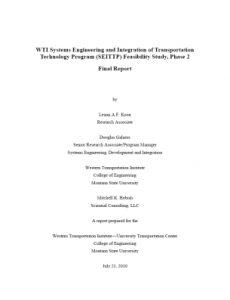
Often, organizations require external, objective studies and analyses of plans, facilities, and capabilities, among other foci, either to demonstrate compliance with requirements and/or regulations, to support decision-making processes, or to bolster proposal efforts. Those tasked with such activities must be conversant with the organization’s mission, technologies to be addressed, staffing, budgets, and relationships with other parent or subsidiary organizations.
I have in-depth familiarity with these requirements.
Analyses and White Paper Experience:
I have successfully addressed several such tasks, examples of which are provided here. The resulting experience is applicable to your tasks and projects.
- Center of Excellence in Systems Engineering Feasibility Study (Western Transportation Institute, Montana State University)
- An Ambient Temperature Blackbody Calibration Facility (National Institute of Standards and Technology [NIST])
- An Analysis of Research, Academic, and Administrative Information System Requirements (Institute of Fundamental Studies, Sri Lanka/UNESCO)
- A Strategic Environmental Data Active Archive Resource (Consortium [now Center] for International Earth Science Information Network [CIESIN])
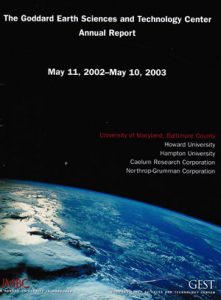
Many organizations have as part of their reporting requirements the creation and distribution of technical reports.
To successfully produce a report requires in-depth knowledge of the organization’s structure, its technological foci, the relationships between organizational divisions, and the organization’s relationship to the entity requiring the report.
From an operational perspective, the detailed reporting requirements must be understood, as must the production process—soliciting sometimes many hundreds of component reports, establishing an audit trail for all phases of the project, recruiting content and copy editors, and always tracking status. Success is measured by producing a high-quality deliverable that amply represents the organization’s work.
I have a long history of carrying out all these activities, on-time and within budget.
Technical Reporting Experience:
I have provided technical reports for some 20 years, the contents of which address a wide panoply of scientific and technical disciplines:
- Goddard Earth Science and Technology Center Annual Report (four years);
- Goddard Earth Science and Technology Center Annual Research Program Plans(three years);
- Joint Center for Earth Systems Technology Annual Report (five years);
- NASA’s Goddard Space Flight Center‘s Director’s Discretionary Fund Report (three years);
- NASA’s Goddard Space Flight Center‘s Research & Technology Report (four years); and
- Reports from NASA discipline working groups on Fundamental Scientific Research in Microgravity; Metals and Alloys; Combustion; Electronic Materials; Fluids, Interfaces, and Transport; Biological Sciences.
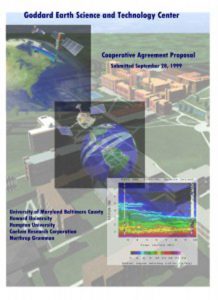
My efforts have made significant contributions to client efforts leading to receipt of over $200,000,000 in funding, with some $20,000,000 coming from successful SBIR/STTR efforts.
These contributions have included proposal effort management, direct contribution to developing strategic approaches and capturing them in writing, and editing and reviewing proposals.
Business development, academic and industrial research, and large-scale organizational efforts all depend—at one time or another—on acquiring funds in a very competitive environment. In all cases, expertise and demonstrable experience is required to address the needs of the sponsoring agency, understanding those needs in a larger context; knowledge of the proposing organization’s capabilities and business and research model; analyses of strengths, weaknesses, opportunities, and threats; staffing requirements; and how this is all reflected in schedules and statements of work.
In-depth familiarity with such requirements is not enough, however: A proven ability to communicate all such components in written form and via presentations is an absolute requirement, as is the ability to lead such an effort or interact with others within the proposing organization to ensure a high-quality, polished, and eminently responsive effort.
Proposal Consulting Experience:
Owing to the sensitive nature of such competitive efforts, many clients cannot be named here. However, a list of proposal effort types is offered for your consideration:
- Small Business Innovation Research (SBIR) and Small Business Technology Transfer (STTR) efforts, amounting to some $20,000,000 of Phase I and Phase II awards from the Department of Defense (D0D), the National Aeronautics and Space Administration (NASA), the U.S. Department of Agriculture (USDA), the U.S. Department of Energy (DoE), the U.S. Environmental Protection Agency (EPA), and more. Take a look at this interview from 2003 for some details;
- A formative proposal in response to a solicitation to organize a major research center to support Earth system science research at a NASA field center;
- National Science Foundation (NSF) Experimental Program to Stimulate Competitive Research (EPSCoR) solicitations, addressing Integrative Graduate Education and Research Traineeship (IGERT) efforts, Materials Research Science and Engineering Centers (MRECs), and Engineering Research Centers (ERCs) for several universities;
- Aerospace contractor responses to NASA solicitations; and
- Basic and applied research proposals from U.S. universities in response to solicitations from the National Institutes of Health (NIH), NSF, NASA, and DoE.
Organizing and Implementing Peer-review Panels
Two proposal-related efforts, undertaken for the American Institute of Biological Sciences under contracts from NASA and the Air Force, involved organizing peer-review panels, recruiting panel membership, implementing the panels and managing the meetings, and reporting results back to the effort’s sponsoring agency. This work required in-depth knowledge of the topic of the solicitation, understanding the functional requirements of the offered proposals to allow recruiting appropriate panel members, and understanding the solicitation’s requirements, as well as the ability to integrate panel recommendations and agency reporting requirements.
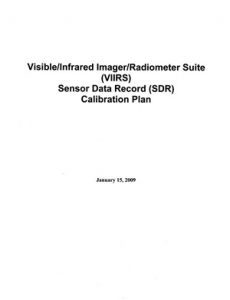
Early in any endeavor is a need to generate realistic plans.
Crafting a plan requires knowledge of the activity’s foundations, the nature of the work (e.g., scientific or technical research), the resources available and needed, and supporting technologies and organizations, all set against a background of circumstances and desired futures.
Planning Document Experience:
Selected planning activities with which I have been involved—as contributor, generator, editor, and/or reviewer— include the following.
- NASA/NOAA’s Visible/Infrared Imager Radiometer Suite Sensor Data Record Calibration Plan
- NASA/NOAA’s Cross-track Infrared Sounder/Advanced Technology Microwave Sounder Sensor Data Record Calibration-Validation Plan
- NASA/NOAA’s Ozone Mapping Profiler Suite Sensor Data Record Calibration-Validation Plan
- NASA’s Earth Observation System Science Plan
- NASA’s Astrobiology Program Plan
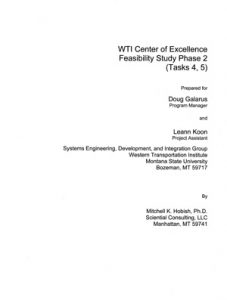
Service to the larger community is not only a requirement for an active participant in professional activities. It is also contributory to a skill set that is applicable across a wide swath of documentation work.
I have reviewed books, films, videos, podcasts, CDs, and DVDs under the auspices of the American Association for the Advancement of Science’s Science Books & Films, a publication nominally geared to educators at all levels, but usable by the general public. I have provided these reviews continuously since 1996, covering a wide range of disciplines in biology, astronomy, astrophysics, cosmology, planetology, history of science, and more.
My review, analysis, and evaluation of Web sites is contributory to the skill set. All aspects of a site—from content, format, fit and finish, and overall usability have been reviewed for clients ranging from small businesses to major lobbying organizations.
I have for many years contributed to reviews of educational materials in the Earth sciences for a NASA contractor charged with providing these materials to educational institutions and the general public.
The skills attained in all such activities would potentially be applicable to your needs.
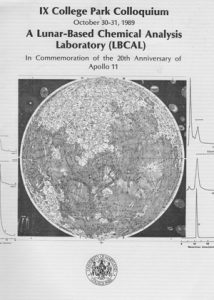
Convening a meeting of any kind that will result in actions, policies, and distribution of technical information requires a publication, reporting on the activities, attendees, deliberations, and conclusions.
Creation of such a document requires not only a thorough understanding of the technical material being discussed, but an ability to abstract the salient points, to know what is vital and what is merely important, and to be able to present the material in a cogent, efficient, effective, and comprehensible manner.
Conference Support Experience:
I have had the privilege of having been assigned many such conference-related tasks. Outcomes and summaries from a few of such meetings are provided here as examples of both organizational and documentation activities.
- NASA Astrobiology Workshop: Piggyback Payloads Splinter Group
- NASA Astrobiology Workshop: Advanced Measurement Systems Splinter Group
- NASA Lunar-based Chemical Analysis Laboratory
- CORM/NIST Workshop on the Need for NIST Color and Appearance Measurements and Standards
- NIST Air Ultraviolet Metrology Workshop
- NIST Metrology Issues in Terahertz Physics and Technology
- NIST Summary of a Workshop on Molecular Spectroscopy Data
- NIST Workshop On Advanced Methods And Models For Appearance Of Coatings And Coated Objects
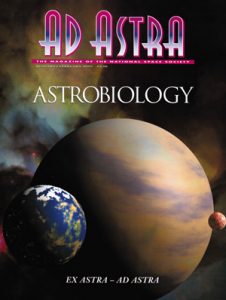
It is often a requirement that an organization provide information beyond its organizational structure. Whether the information is formal or informal, it must be timely, attract the attention of target audiences, and at a suitable level of detail.
I have a long history of supporting educational and outreach activities. These tasks include integrating and generating remote sensing data product user’s guides; editing and writing newsletters; generating and critiquing curricula and other educational materials; developing easily comprehended, otherwise highly technical material for Web (and other) publication; conceptualizing and implementing entire museum galleries, including providing readable and audible text and narrative; writing a popular-press column on topics of interest to the general public; and writing a blog, For Your Consideration.
Outreach Communication Experience:
Some specifics of relevant activities are provided here:
- Articles for NASA’s Goddard Space Flight Center’s Earth Sciences News (author, three years)
- Articles for NASA’s Goddard Space Flight Center’s Earth Observer (author, content and technical editor; two years, ongoing)
- Editing a gatefold and brochure for NASA’s GSFC’s Astrophysics Division
- Ask Doc Whatsit (newspaper column) (five years)
- Environmental Data Record descriptive modules for the National Polar-orbiting Operational Environmental Satellite System Preparatory Project
- A Visible/Infrared Imager Radiometer Suite Sensor Data Record User’s Guide for the National Polar-orbiting Operational Environmental Satellite System Preparatory Project
- For Your Consideration, a blog dedicated to exploring excellence in the technical realm
- Astrobiology 101: Exploring the Living Universe, article in Ad Astra magazine
- Earth is a Planet, Too!, article in Ad Astra magazine
The dictum, “publish or perish” is well-entrenched in the minds of researchers. When the results of basic and applied research and technology activities are distributed, background, methodology, and placement of the work in a larger context must be provided, along with appropriate references to allow other researchers to understand the nature of the work and how it fits (or doesn’t) with their own efforts.
I have many years of experience with research and highly technical publications, as witnessed by this selected list of peer-reviewed and edited items (presented alphabetically by first author), followed by a selected list of publications published as abstracts.
Research and Related Publication Experience:
Listed here are research activities that demonstrate the wide range of topics and techniques that support my basic approach not only to scientific research, but to technical problem solving of all kinds. Such problem solving requires background and context, analysis of the problem’s technical aspects, understanding methodology and applying it (often with modifications), careful implementation of plans, collection of data, drawing appropriate and supportable conclusions, and—ultimately—increasing the store of knowledge preliminary to further investigations.
Sole Responsibility
Direct Interaction between Amino Acids and Nucleotides as a Possible Physicochemical Basis for the Origin of the Genetic Code – 1H nuclear magnetic resonance (NMR) spectroscopy was used to explore the binding constants for systems consisting of genetic code codon and anticodon mono-, di-, and trinucleotides with their cognate amino acids. The results were analyzed using nonlinear least-squares regression analysis to several candidate models. The results showed a consistent pattern of statistically significant interaction between the anticodon nucleotides and their cognate amino acids. There was a clear preference for interactions with the 3’-5’ nucleotides; there was no interaction observed when 2’-5’ nucleotides were used. – Laboratory for Chemical Evolution, University of Maryland, College Park.
The Binding of Physiologically Significant Protons to 2,3-Diphosphoglycerate – A 31P nuclear magnetic resonance (NMR) study was performed to understand how protons titrating in the physiologically significant pH range bound to this modulator of hemoglobin action. The results were phenomenologically similar to standard titration techniques, but the granularity of the data and application of statistical thermodynamic considerations allowed a more-detailed analysis to derive the free energy of interaction of the binding. This information was used in another study, described immediately below. – The Johns Hopkins University, Baltimore, MD
pH Dependence of 2,3-Diphosphoglycerate Binding to Human Hemoglobin A1 – Rate equilibrium dialysis was used to study the combined effects of temperature and pH on hemoglobin function. 32P-labeled 2,3-diphosphoglycerate was used as the marker. A statistical thermodynamic approach resulted in a multidimensional scheme that allowed for a complete analysis of the various interactions. – The Johns Hopkins University, Baltimore, MD
Team Member
Isolation and Characterization of E. coli DNA Polymerase I – Standard protein isolation and characterization of this enzyme, with an eye toward understanding its role in mutation and DNA repair. – The Johns Hopkins University, Baltimore, MD.
Isolation and Characterization of Calf Thymus Chromatin – Calf thymus chromatin was used to explore the role(s) that histones play in DNA packing and genetic code transcription. – The Johns Hopkins University, Baltimore, MD.
Isolation and Characterization of Polyoma Nucleoprotein Complex – Mouse 3T3 cells were infected with polyoma virus to allow isolation and characterization of mid-replication assemblies to further understand the general mechanism of DNA replication. – The Johns Hopkins University, Baltimore, MD
Steady-state and Kinetic Analysis of Binding of Asialoorosomucoid to the Isolated Rabbit Hepatocyte Lectin – 125I-labeled asialoorosomucoid was used to explore the kinetics of binding with a lectin. The results showed two classes of binding site. The Johns Hopkins University, Baltimore, MD
Hepatocyte Adhesion to Carbohydrate-derivatized Surfaces. I. Surface Topography of the Rat Hepatic Lectin – Biochemical and immunohistological techniques were used to explore the topographical redistribution of the rat hepatic lectins in response to galactose-mediated cell adhesion. The work provided a measurement of lateral diffusion coefficient, suggesting no impediment to membrane in-plane diffusion, and that physical size and or lectin density of patches are restricted by kinetic or topological constraints. – The Johns Hopkins University, Baltimore, MD
Effects of α-amanitin on Puff Formation and RNA Synthesis in D. melanogaster Salivary Glands – Salivary glands from late third-instar larvae of D. melanogaster were incubated in radionuclide-labeled RNA precursors in the presence of an known inhibitor of RNA synthesis to explore physical and functional changes as observed by liquid scintillation counting and radiomicrography. – Tulane University, New Orleans, LA
Ultrasonic Absorption Properties of Human Hemoglobin – In vitro research to explore the mechanisms by which ultrasound is absorbed by proteins. The work consisted of measuring ultrasonic absorption of samples of human hemoglobin obtained from a local hospital as a function of dehydration state. The distinctions between bound and free water in the samples were found to be of importance in understanding these mechanisms. – University of Rochester, Rochester, NY
Advisory Role
A Quantitative Assay of Biologically Important Compounds in Simulated Primitive Earth Experiments – A mixture of candidate prebiotic Earth gases were subject to high-voltage, high-frequency electric discharge to examine the chemical yields of various molecules as a function of energy input to get a better insight into the relative role of electric discharges on the primitive Earth. – Laboratory for Chemical Evolution, University of Maryland, College Park.
Trace Elements in Chemical Evolution – This work was done to explore the origin of the essentiality of trace elements in present biological systems; the possible roles of trace elements in chemical evolution; and the origin of enzymatic activity with metal ions, i.e., the origin of metalloenzymes.Electric discharge experiments have been performed in a plausible primitive earth atmosphere consisting of methane, nitrogen, and water over an aqueous phase of an ammonia-ammonium buffer solution. In some experiments, ions of metal elements, calcium, magnesium, zinc, iron and molybdenum were introduced. Gas phase products and amino acids in the liquid phase were analyzed by gas chromatography. With trace metal ions, fewer organic compounds in the gas phase and larger amounts of amino acids were obtained than without them. The results have shown the possible importance of trace elements in chemical evolution and the origin of life on the earth. – Laboratory for Chemical Evolution, University of Maryland, College Park.
Synthesis and Properties of an all-D Model Ribonuclease S-Peptide – As part of an effort to understand the origins of biochirality, the S-peptide of RNAse was constructed with solid-phase synthesis, using all-D amino acids. Circular dichroism (CD) studies of the D-peptide showed a peak of positive ellipticity whereas a negative ellipticity peak for the L-peptide was observed in the same region. The effects of temperature and trifluoroethanol on the far-ultraviolet CD spectra of D- and L-peptides were similar but of opposite sign, confirming the expectation that the L-peptide has the propensity to form an α-helical structure which is enantiomeric with respect to that formed by the L-peptide. In the presence of S-protein, the L-peptide showed hydrolytic activity against the substrate cytidine-2′:3′-monophosphate, whereas the D-peptide was inactive. – Laboratory for Chemical Evolution, University of Maryland, College Park.
Nonrandomness in Prebiotic Peptide Synthesis – Phosphoanhydrides of alanine with guanosine monophosphate, uridine monophosphate, and adenosine monophosphate were synthesized and characterized to investigate the specificity of peptide bond formation in a model terrestrial prebiotic environment. The differential reactivity of the amino acids results in nearest-neighbor preferences during the peptide synthesis, whereas the nature of the nucleotides and the presence of complementary polynucleotides had no influence on the specificity. These results suggest that some peptides would have been more abundant than others on the prebiotic earth and have implications for the study of the origins of the genetic code and protein synthesis. – Laboratory for Chemical Evolution, University of Maryland, College Park.
Modeling Sea-Ice Meltwater Effects on 18O Concentrations in Arctic Surface Waters – The project was carried out to test the use of data from the Strategic Environmental Distributed Active Archive Resource (SEDAAR), which provided access to and use of high-value Department of Defense data for environmental research and remediation applications. The work showed how SEDAAR was integrated into the project, and provided an evaluation of the effectiveness of the SEDAAR data and platform. – Consortium for International Earth Science Information Network, Washington, D.C. Office.
Russian Environment and Health Mapping – SEDAAR (see above) data were used to explore the possible impact of environmental problems on the health of a population, based on the spread of 137Cs in two areas where nuclear accidents had taken place. Although a major goal of the project—to perform meaningful statistical analysis of available data—was not possible owing to the ambiguous origins of the data and associated coarse granularity–the project did result in generating data compatible with the ARC/INFO geographic information system (GIS) for later use by other researchers. – Consortium for International Earth Science Information Network, Washington, D.C. Office.
